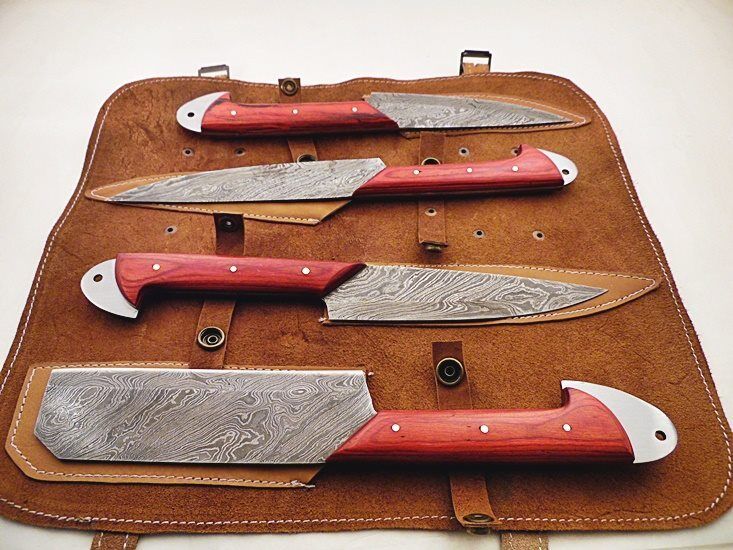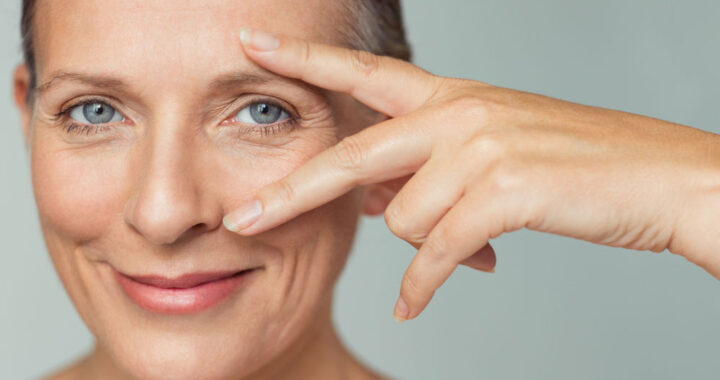Damascus: Kitchen Knives with Special Structure!
5 min read
Damascus-Kitchen-Knives-set
Today we will return to the topic of kitchen knives and we will talk about Damascus knives set with steel blades AUS-8, manufactured by Stainless Steel, Japan.
Damascus has been famous in our country for a long time, enjoying not only interest in its products, but also respect. This is a special situation. On the one hand, this is a completely traditional design of the knife, and on the other hand, a very strict attitude to the quality of steel and heat treatment (and this has already proven itself many times in tests).
Japanese Tradition
Traditionally, for Japanese manufacturers, marketing is not the strongest link. You can refer to it if you are looking for official information about Damascus. We will find the official website (Japanese) which contains links to European and American portals. There is no information on the Japanese site itself about knives, but there are crumbs on European and American sites. And then, in googling, we found another official Japanese site, they say, Japanese Japanese.
Japanese Manufacturers
Here you have all the relevant information. The question arises: why is everything so complicated and confusing? The fact is that Japanese manufacturers are completely different. Both in terms of independence and capacity. Some produce only folding knives, others only produce kitchen knives, or only scissors, for example.
Manufacturers that make everything can be counted with the fingers of one hand. Among them is such a monster as the Kai Corporation (annual revenue of one billion dollars), of which Damascus is a part. Damascus manufactures folding knives, kitchen knives, and manicure tools. This entire company is produced in Japan. Moreover, Damascus is a company whose products do not differ from market to market (everything made in Japan is made and sold all over the world). This approach and production details create this very special situation.
Damascus is a Rich Series Of Knives
There are five main knife models in the set: Small (with a blade of 90, 120, and 150 mm), Santoku (with a blade of 180 mm), a Nakiri vegetable axe (the length of the blade is 165 mm), and Giotto chef knives (180, 210, blade options 240 and 270 mm), sujihiki slicer (blade length 240 and 270 mm). It may seem strange that the Damascus is called a small paring knife, but this is a decision from the manufacturer: all small knives of all series have this name in Western catalogs.
Let’s look at the performance characteristics of a knife using the example of a chef’s gyuto with a 210 mm blade: AUS-8 steel, 2.1 mm stub thickness, weight 205 grams. The declared blade hardness from the manufacturer is 60-62 Rockwell.
AUS-8 Steel
AUS-8 steel is a well-known material in our country, thanks to Ontario RAT knives. It is not a powder of stainless steel, which can be conditionally attributed to the group of medium-production steels. And if we compare this material with the modern standard for Japanese knives, VG-10 steel, then we will see the following: AUS-8 steel does not contain cobalt, has a slightly lower carbon content, and has less molybdenum than VG-10.
That is, in General
the AUS-8 has a somewhat simpler composition than VG-10 steel. In practice, among knife communities, this dichotomy is most pronounced. They are often made of VG-10 steel which is associated with Japanese kitchen knives.
Damascus knives
That is, with high rigidity, cutting geometry, and, accordingly, high productivity. AUS-8 steels: In contrast, the blade’s quiet (and often tactical) geometry and medium or even low hardness (56-58 HRC), therefore not the highest performance. But what about Damascus knives? To answer this question, the knife must first be sharpened!
For testing (and, accordingly, for sharpening), a kitchen knife with a blade length of 90 mm was used. When the sharpening, feedback, and wishes of the audience interested in sharpening were taken into account, actual sharpening was performed on the Kadet Pro sharpener from the art studio Profil.
The Following Abrasives Were Used:
- Boride T2 – #220, #400, #800
- Boride PC- # 1200
- Suehiro- #10,000
- Venevsky Diamond Plant – diamond paste (molds)
The sharpening was carried out, as always, at a full 36 degrees. In general, the sharpening was interesting and I am satisfied with the result. 220 abrasives are not necessary. On the 400 skimmers, the job was done with Vaseline. And on the 800 and 1200 days – with the help of Bori-lube coolant.
Diamond Paste
The coolant was intentionally used in place of oil (experimental), on solid steel, and the coolant was more interesting. And this “most interesting” was so noticeable that Bori-lube coolant was also used to finish the Suehiro. Nanoprotech penetrating lubricant was used to melt diamond paste into a briquette. Based on the results of using diamond briquettes, I can say that they are slowly replacing syringes and cans. It applies predictably, works well, and dissolves in any oil. It is comfortable. And working with diamond paste in this case is not a great finish, but a safe finish.
Boride #1200 and Suehiro #10,000 worked very well. It also showed the newspaper clipping after 10,000. On the other hand, it has to be said of the mix: Having good calipers available, I always find it difficult to measure anything in the range below 0.1mm. At an angle of 36 degrees, the feeding of the edge of the knife turned out to be very weak. Bosque Damascus in terms of information accuracy is the highest. Well, let’s reveal the plot – the test results are on the graph!
Improves Grip
As you can see, high rigidity combined with the most “brutal” geometry gives a natural result. Note that testing is also a working environment. Micarta handles on Damascus knives. And the geometry of the handle itself does not give a bonus, for example, gives a barrel. But the handle of the Damascus knife is shorter than usual, and when cutting, the little finger rests on the metal butt plate, which improves grip, reduces brush slip, and, of course, gives it its points.
Performance Of The Damascus AUS-8
The performance of the Damascus AUS-8, of course, is simpler than that of the Damascus VG-10 itself, but not as much as is generally believed. However, steel is not critically different and both are dust-free stainless steel.
What’s The Result?
Let’s take a look at this trio of knives: Affordable Housing Developer Damascus Revolution, Damascus Aranami, and among these super attackers, the humble Damascus knife. Do you see the differences? The Damascus Knife has a much shorter handle! Damascus is a special kitchen knife.
That is, if we talk about the traditional grip when the brush only covers the handle, then this is not a Forrest. It just requires additional control of the blade with your fingers. The particular approach to working with such a knife wasn’t the only thing that drove me to the test.
Damascus Working
Damascus has been working with AUS-8 for a long time, and this steel in its performance acquires very good sharpness. It is very interesting to try. As a result, Damascus knives fulfilled all expectations.
If you are looking for knives with short handles from a famous manufacturer, pay attention to this series. Can these knives be recommended? Yes, but with a caveat: The short grip is good for a conditioned grip. But manufacturers do not just make long handles – this is more familiar to the layman. You have to hold it in your hands, try and try!





